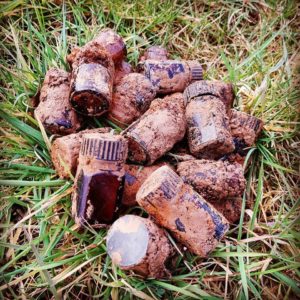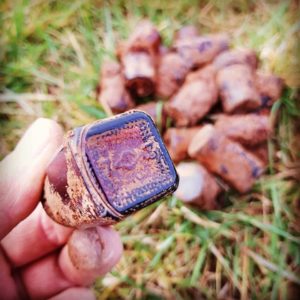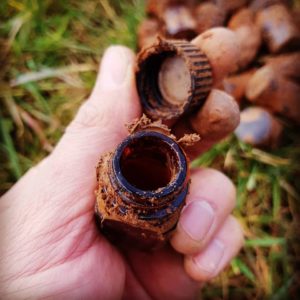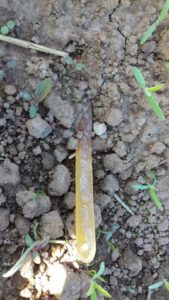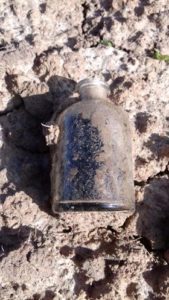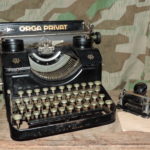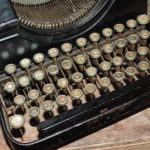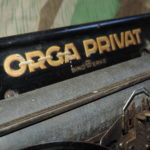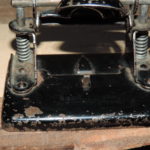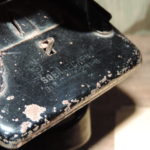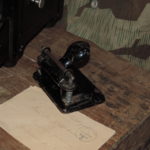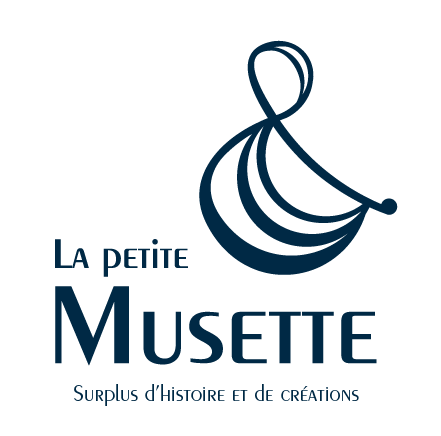by Bertrand Froger | 2 Apr 2018 | Celebrations, Life of soldiers
Utah to Cherbourg!
Utah to Cherbourg will be a major event of the 74th anniversary of the Battle of Normandy. It will take place from 19 to 24 June 2018 in the Cotentin and will aim to reconstitute a “reconnaissance” element (including 1 armored car and 1 scout section) and an element “infantry” (with 2 rifle squads) in the colors of the 79th Infantry Division “Cross of Lorraine”. The exact route of this division will be taken from Utah Beach, via Picauville, St Joseph, The Jacob Cross, Negreville, Martinvast, Cherbourg, The Hague Well and Carentan. Participants will be fully independent for 5 days, total immersion, whatever the weather conditions! The infantry and the reconnaissance will have their objective to reach at the end of each day, the rifles squads will make between 8 to 10 km / day on foot and they will also be conveyed in GMC.
How to participate?
If you want to participate in a unique event, join CIB (Organization): cib.reenactorgroup@laposte.net
More information on the Facebook page: UTAH TO CHERBOURG
by Bertrand Froger | 16 Mar 2018 | Collections, Historical events, Life of soldiers
Dog tagS,
various markings
We are often asked how the dog tags were struck at the time, then small turtoriel on the different strikes existing in time on the plate M1940. Attention, a soldier can be remap his own plates during his war so the typing pattern does not correspond to the date of engagement. To hit your own dog tags
https://boutique.lapetitemusette.com/fr/accueil/16-dog-tag-personnalise.html
December 1940 – November 1941
1st line: First name, first letter of 2nd name, last name
2nd line: Number, blood type
3rd line: First name and last name of the person to contact
4th line: Address of the contact person
5th line: City and state of the contact person

November 1941 – July 1943
(addition of tetanus and religion)
1st line: First name, first letter of 2nd name, last name
2nd line: number, tetanus vaccination, tetanus booster, blood group
3rd line: First name and last name of the person to contact
4th line: Address of the contact person
5th line: City and state of the contact person, religion

July 1943 – March1944
(withdrawal of the person to contact for fear of reprisals)
1st line: First name, first letter of 2nd name, last name
2nd line: number, tetanus vaccination, tetanus booster, blood group
3rd line:
4th line:
5th line: Religion

March 1944 – April1946
(Name and surname inversion)
1st line: Surname, first name
2nd line: number, tetanus vaccination, tetanus booster, blood group
3rd line:
4th line:
5th line: Religion

by Bertrand Froger | 12 Mar 2018 | Collections, Discoveries, Life of soldiers
Harvesting flasks
It was during a small Sunday walk through the plowing fields of the Carentan sector largely beaten by the rain for long weeks, that were collected on the ground about twenty small bottles of halazone. These small round-shaped or square (Owens-Illinois) brown-colored bottles, which may also be in a colorless version, with a white and / or blue label, were supplied to US Army cardboard soldiers or with rations. -in-1 because they were filled with tablets used to make the water clean for consumption. We often find these bottles with either a plastic stopper or metal, with an inside a piece of cotton.
by Bertrand Froger | 22 May 2017 | Collections, Discoveries, Life of soldiers
Remains of the Battle on the ground
Small Sunday walk in Normandy and we still find some small trash dragging on the ground. The bottle contained penicillin while the complete toothbrush is a Park Avenue model from Dupont, made in USA! 73 years later, the traces of the conflict are still omnipresent. Our beaches, plowshares and pastures were the scene of the greatest military operation of all time, requiring extraordinary means. Millions of men and women have crossed Europe and the world to come and repel the German invaders. Thus, many small objects of everyday life were thrown in the corner of hedges or lost during an assault. These are still beautiful witnesses.
by Bertrand Froger | 10 May 2017 | Collections, Historical events, Life of soldiers
The M1 Garand: A gun that enters the Legend
The clips of 8 Cal.30 cartridges comes to supply the first semi-automatic rifle of the US army: the M1 Garand. The production of these clips was such that most of those produced during the Second World War were actually used by reconditioning with post-war ammunitions in the various American and other armed forces. However, reliable and robust, the M1 Garand will be used throughout the world thereafter, and for decades. Thus, many clips will be remanufactured. This alphabetical list will allow you to no longer have you. In Bold, you will find the apparent marking on the clip, followed by its origin. The words “WWII” will be entered if the clips are produced during this period, otherwise “Post WWII”. Failure to do so will help to maintain doubt and the list may evolve. The term “trade” indicates a commercial contract for distribution other than in the army.
List of Manufacturing of clips for M1 GARAND
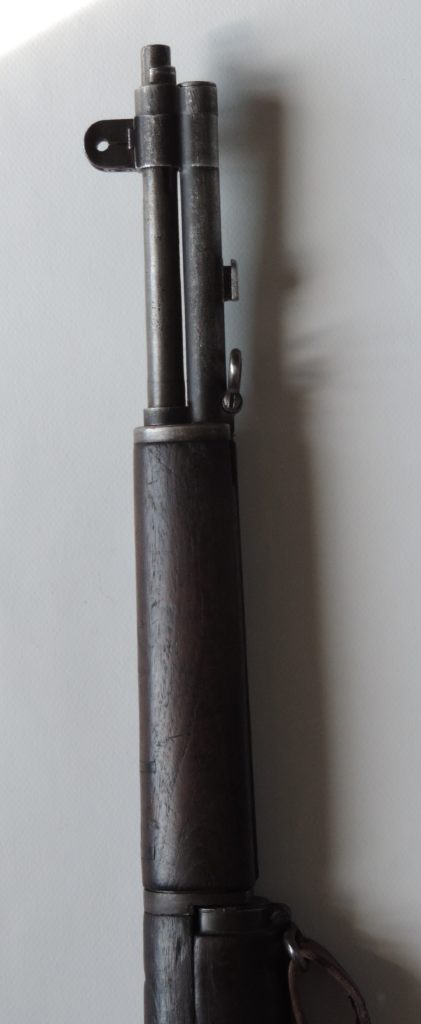
1 – Springfield Armory – Springfield, MA, USA (before WWII and WWII)
58 and 59 – Nationalist China (POST WWII)
ACE 2 – Aggressive Engineering Corp – Anaheim, CA, USA (Military Contract)
AEC 2 – Aggressive Engineering Corp – Anaheim, CA, USA (Trade)
AEC 3 – Aggressive Engineering Corp – Anaheim, CA, USA (Tradee)
AGE 1 – Aggressive Engineering Corp – Anaheim, CA, USA (Military Contract WWII)
AGE 2 – Aggressive Engineering Corp – Anaheim, CA, USA (Military Contract POST WWII)
AMP – All Metal Products – Wyandotte, MI,USA (WWII)
AMP 1 – All Metal Products – Wyandotte, MI,USA (WWII)
BLM – Barry L Miller Eng Inc. – Irvine, CA, USA (WWII)
BW – Borg Warner – Spring Division,Bellwood, IL, USA (WWII)
B-W 1 to B-W 10 – Borg Warner – Spring Division,Bellwood, IL, USA (WWII)
BR-W 1 to BR-W 8 – Borg Warner – Spring Division,Bellwood, IL, USA (POST WWII)
C – Springfield Armory – Springfield, MA, USA (before WWII and WWII)
C – Lerio Patent Cup Co. – Mobile, AL, USA (WWII)
C* – Lerio Patent Cup Co. – Mobile, AL, USA (WWII) CMP 3 – Aggressive Engineering Corp – Anaheim, CA, USA (Trade POST WWII)
Danly – Danly Machine Co – Chicago, Il, USA
DAQ – Dominion Arsenal Quebec – Quebec (POST WWII)
f – Fedder’s Manufacturing Co.- Buffalo, NY, USA (WWII)
fB – Fedder’s Manufacturing Co.- Buffalo, NY, USA (WWII)
fC – Fedder’s Manufacturing Co.- Buffalo, NY, USA (WWII)
fD – Fedder’s Manufacturing Co.- Buffalo, NY, USA (WWII)
fE – Fedder’s Manufacturing Co.- Buffalo, NY, USA (WWII)
fF – Fedder’s Manufacturing Co.- Buffalo, NY, USA (WWII)
HA – Haerens Ammunitions Arsenal – Copenhagen, Denmark (POST WWII)
IS – International Silver – Meriden, CT, USA (WWII)
IS1 to IS5 – International Silver – Meriden, CT, USA (POST WWII)
IMI – Israel Military Industries – Ramat Hasharon, Israël
JMO 68 – Julius Maurer – Oberstein, Allemagne (POST WWII)
JMO 69 – Julius Maurer – Oberstein, Allemagne (POST WWII)
JMO 70 – Julius Maurer – Oberstein, Allemagne (POST WWII)
JMO 71 – Julius Maurer – Oberstein, Allemagne (POST WWII)
JMO 72 – Julius Maurer – Oberstein, Allemagne (POST WWII)
JMO 74 – Julius Maurer – Oberstein, Allemagne (POST WWII)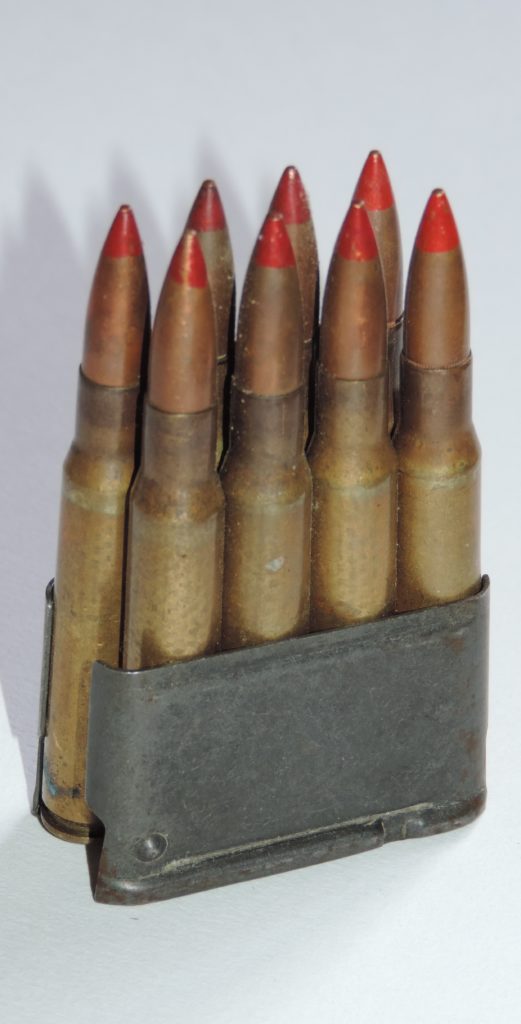
L&H 81 – Italy or Denmark (POST WWII)
LP 1955 – Italy (POST WWII)
LP 1956 – Italy (POST WWII)
LP 1961 – Italy (POST WWII)
MAS – Manufacture D’Armes de St Etienne – Saint Etienne, France (POST WWII)
MBZ – Murik & Ball Zeist – Pays-Bas (POST WWII)
MFT – Metaalwaren Fabrik Tiburg – Pays-Bas (POST WWII)
NW – Northwest Metal – Seattle, WA, USA (WWII)
O – Springfield Armory – Springfield, MA, USA (before WWII and WWII)
RW – R Wallace & Sons – Wallingford, CT, USA (WWII)
S – Stanley Works – New Britain, CT, USA (WWII)
S (in a circle) – ?
SA (Big) – Springfield Armory – Springfield, MA, USA (WWII)
SA (small) – Springfield Armory – Springfield, MA, USA (POST WWII)
SA (dash over) – Springfield Armory – Springfield, MA, USA (POST WWII)
SA (dash over and under) – Springfield Armory – Springfield, MA, USA (POST WWII)
S.F. – Serini France (POST WWII)
SW – Stanley Works – New Britain, CT, USA
TF&S – Thomas French & Co – Manchester, United Kingdom
5mm hole – Austria (POST WWII)
W1 to W6 – R Wallace & Sons – Wallingford, CT, USA (WWII)
WEP – Wade Electric Products – Sturgis, MI , USA
WEP1 à WEP5 – Wade Electric Products – Sturgis, MI , USA (WWII)
WRA – Winchester Repeating Arms – New Haven, CT, USA (WWII)
WRA Educational – Winchester Repeating Arms – New Haven, CT, USA (WWII)
by Bertrand Froger | 11 Apr 2017 | Collections, Discoveries, Life of soldiers
Offices in the German army
We will never repeat it enough, all military equipment is not necessarily green and does not look like a helmet or a weapon. As evidenced by these two office accessories, there are other witnesses of the Second World War passing more unnoticed. These two elements are actually a Bing-Werk typewriter and a perforator, left behind by the soldiers of the Werhmacht following the collapse of Normandy in the west of the Cotentin in the summer of 1944. After they moved, these two administrative tools were recovered on site and then stored by inhabitants of the region. It remains, however, an enigma about the origin and function of theses offices from which they come from? kommandantur? Headquarters of a unit? Military hospital? … Anyway, they are still two witnesses of an era not so far away, saved from a certain destruction.
History and Technology
The typewriter presented is an Orga Privat model from Bing-Werk whose name and initials can be seen on several parts of the machine. This series begins to be produced during the 1920s, the market demanding more efficient tools and at modest prices. Bing-Werk is a well-known German firm, known mainly for the toy industry. The patent number applied using a decal on the reverse allows to confirm a production around the years 1920/30. The keyboard in “QWERTZU” indicates a manufacture for Germany (in the absence of an AZERTY keyboard for France, or QWERTY for many English-speaking countries). “QWERTZU” is actually the order of appearance of the first 7 keys of the keyboard. As regards the perforator, this is a Soennecken and is not dated, however it is marked DRGM (Deutsches Reichsgebrauchsmuster) before a short patent number (231-8). This mention DRGM indicates a production located between 1891 and 1949 (between 1945 and 1949, under allied occupation, the use of the DRGM is continued although the Reich was annihilated) and the number confirms a production of the 30s. Two elements of offices which will complement a German administrative scenario.







